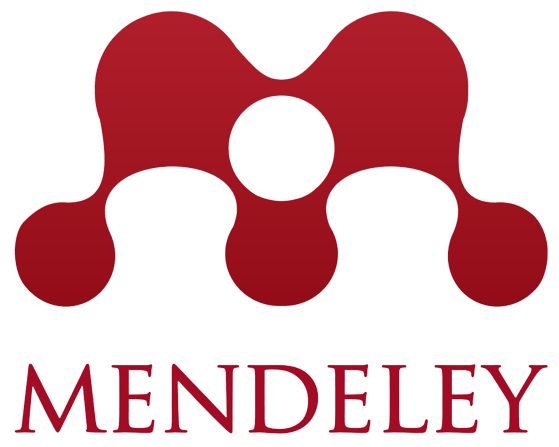Literature Review: Effect of Chicken Liver Addition on Iron Content in Food Formulation Products to Prevent Anemia

Downloads
Backgound:Iron (Fe) together with protein is needed by the body in the formation of hemoglobin so that if the amount of intake is less, the number of red blood cells used to transport oxygen to the lungs is not enough to meet the physiological needs of the body with normal hemoglobin levels of 12-15 g/dl in female adolescents and 13-17 g/dl in male adolescents. Iron deficiency causes disturbances or obstacles to growth which can cause symptoms of lethargy, weakness, fatigue and forgetfulness to anemia. Chicken liver is the most common source of iron used as a food formulation additive because it is easily accessible and is a source of heme iron which is more easily absorbed and contains less mineral binding material. Therefore, nutrient fortification in food formulations by utilizing chicken liver is needed to prevent anemia.
Objectives:The effect of iron nutrient levels from the results of food formulations was analyzed by utilizing chicken liver as a substitute material intended to increase iron intake in an effort to prevent anemia.
Methods: This research used the Literature Review method by tracing and reviewing several similar research articles that used experimental studies, especially in terms of product development that utilized chicken liver as a source of iron intake. The article search used the Google Scholar electronic database within the last 10 years (2014-2024) with keywords “anemia”, "iron", "food formulations", and "chicken liver".
Results: From the 12 articles found, all formulas met the percentage of daily iron requirements according to the targets set by each study. The best formula had the highest iron content, which was 14.05 mg per 100 grams, while the formulation with the lowest iron content still met the target percentage of Recommended Dietary Allowance (RDA), which was 2.04 mg per 100 grams. The difference in iron content among the studies could be influenced by the percentage of chicken liver added to the formulation and the addition of other potential food ingredients.
Conclusions:There is an effect of iron levels produced by food formulation products with the addition of chicken liver which has the potential to prevent anemia in the community.
Agustia, F.C., Subardjo, Y.P. dan Sari, H.P. (2017) “Pengembangan Biskuit Mocaf-Garut dengan Substitusi Hati Sebagai Alternatif Biskuit Tinggi Zat Besi untuk Balita,” Jurnal Gizi Pangan, 12(2), hal. 129–138. Tersedia pada: https://doi.org/10.25182/jgp.2017.12.2.129-138.
Amalia, A. dan Tjiptaningrum, A. (2016) “Diagnosis dan Tatalaksana Anemia Defisiensi Besi,” Majority, 5(5), hal. 166–169.
Annisa, S.N. dan Suryaalamsah, I.I. (2023) “Formulasi Cookies dari Tepung Hati Ayam dan Tepung Kedelai Sebagai Makanan Sumber Zat Besi Pencegah Anemia Pada Remaja Putri,” Muhammadiyah Journal of Nutrition and Food Science, 4(1), hal. 14–27. Tersedia pada: https://doi.org/10.24853/mjnf.4.1.14-27.
Ayuningtyas, I.N. et al. (2022) “Analisis Asupan Zat Besi Heme dan Non Heme , Vitamin B 12 dan Folat serta Asupan Enhancer dan Inhibitor Zat Besi Berdasarkan Status,” Journal of Nutrition College, 11(2), hal. 171–181. Tersedia pada: https://doi.org/10.14710/jnc.v11i2.32197.
Fauziah, A., Fajri, R. dan Hermanto, R.A. (2019) “Daya Terima dan Kadar Zat Besi Nugget Hati Ayam dengan Kombinasi Tempe sebagai Pangan Olahan Sumber Zat Besi,” Journal of Holistic and Health Sciences, 3(2), hal. 65–74. Tersedia pada: https://doi.org/10.51873/jhhs.v3i2.48.
Fitriany, J. dan Saputri, A.I. (2018) “Anemia Defisiensi Besi,” Jurnal Averrous, 4(1), hal. 1–14. Tersedia pada: https://doi.org/10.29103/averrous.v4i2.1033.
Kamaruddin, M. et al. (2022) “Nilai Gizi dan Daya Terima Cookies dengan Penambahan Bayam Merah dan Hati Ayam sebagai Upaya Pencegahan Anemia pada Remaja Putri,” Jurnal Gizi dan Kesehatan, 2(1), hal. 31–37. Tersedia pada: https://doi.org/10.36086/jgk.v2i1.
Kusnadi, K., Tivani, I. dan Amananti, W. (2016) “Analisa Kadar Vitamin Dan Mineral Buah Carica Dieng (Carica Pubescens Lenne) dengan Menggunakan Spektrofotometri UV-VIS dan AAS,” Jurnal Ilmiah Farmasi, 5(2), hal. 81–87. Tersedia pada: https://doi.org/10.30591/pjif.v5i2.384.
Listiani, I., Wijaningsih, W. dan Rahmawati, A.Y. (2022) “Pengaruh Formulasi Nugget Kacang Merah dan Hati Ayam Terhadap Kadar Zat Besi, Kekerasan, dan Organoleptik,” Darussalam Nutrition Journal, 6(2), hal. 93–101. Tersedia pada: https://doi.org/10.21111/dnj.v6i2.7464.
Lutfiah, A.N., Adi, A.C. dan Atmaka, D.R. (2021) “Modifikasi Kacang Kedelai (Glycine Max) dan Hati Ayam Pada Sosis Ayam Sebagai Alternatif Sosis Tinggi Protein dan Zat Besi,” Amerta Nutrition, 5(1), hal. 75–83. Tersedia pada: https://doi.org/10.20473/amnt.v5i1.2021.75-83.
Malichati, A.R. dan Adi, A.C. (2018) “Kaldu Ayam Instan dengan Substitusi Tepung Hati Ayam sebagai Alternatif Bumbu untuk Mencegah Anemia,” Amerta Nutrition, 2(1), hal. 74–82. Tersedia pada: https://doi.org/10.20473/amnt.v2i1.2018.74-82.
Masthalina, H., Laraeni, Y. dan Dahlia, Y.P. (2015) “Pola Konsumsi (Faktor Inhibitor Dan Enhancer Fe) Terhadap Status Anemia Remaja Putri,” Jurnal Kesehatan Masyarakat, 11(1), hal. 80–86. Tersedia pada: https://doi.org/10.15294/kemas.v11i1.3516.
Mutiasyahrain, S., Yulianto dan Siregar, A. (2023) “Uji Daya Terima Formulasi Kue Semprit dengan Penambahan Hati Ayam dan Tepung Kacang Kedelai,” Jurnal Gizi, 3(1), hal. 46–53. Tersedia pada: https://doi.org/10.36911/nutrient.v3i1.1621.
Permatasari, N. et al. (2020) “Pengembangan Biskuit MPASI Tinggi Besi dan Seng dari Tepung Kacang Tunggak (Vignia Unguiculata L.) dan Hati Ayam,” Jurnal Pangan dan Gizi, 10(2), hal. 33–48. Tersedia pada: https://doi.org/10.26714/jpg.10.2.2020.33-48.
Putri, W.S. (2021) Pengaruh Penambahan Tepung Hati Ayam dan Tepung Pucuk Labu Kuning Pada Sosis Ayam Terhadap Kadar Hemoglobin Remaja Putri di Yayasan Ma’had Tahfidz Syuhratul Islam, Kecamatan Gelumbang. Universitas Sriwijaya. Tersedia pada: https://doi.org/10.1128/AAC.03728-14.
Rahayuningtyas, A. dan Kuala, S.I. (2016) “Pengaruh Suhu dan Kelembaban Udara Pada Proses Pengeringan Singkong (Studi Kasus : Pengering Tipe RAK),” Jurnal Penelitian dan Pengabdian Masyarakat, 4(1), hal. 99–104. Tersedia pada: https://doi.org/10.29313/ethos.v0i0.1663.
Rakhman, D.P. dan Adi, A.C. (2023) “Daya Terima dan Kandungan Gizi Mi Kremes Substitusi Mocaf (Modified Cassava Flour), Hati Ayam dan Biji Labu Kuning untuk Mencegah Anemia,” Jurnal Media Gizi Kesehatan Masyarakat, 12(1), hal. 314–321. Tersedia pada: https://doi.org/10.20473/mgk.v12i1.2023.314-321.
RI, K. (2017) Tabel Komposisi Pangan Indonesia. Jakarta.
Rohmalia, D. dan Dainy, N.C. (2023) “Daya Terima dan Kandungan Gizi Mie Basah Berbasis Tepung Hati Ayam dan Tepung Talas Bogor,” Muhammadiyah Journal of Nutrition and Food Science, 4(1), hal. 1–13. Tersedia pada: https://doi.org/10.24853/mjnf.4.1.1-13.
Santosa, H. et al. (2016) “Pemanfaatan Hati Ayam Sebagai Fortifikan Zat Besi dalam Bubur Bayi Instan Berbahan Dasar Ubi Jalar Ungu (Ipomoea Batatas L.),” Jurnal Inovasi Teknik Kimia, 1(1), hal. 27–34. Tersedia pada: https://doi.org/10.31942/inteka.v1i1.1641.
Setyandari, R. dan Margawati, A. (2017) “Hubungan Asupan Zat Gizi dan Aktivitas Fisik dengan Status Gizi dan Kadar Hemoglobin Pada Pekerja Perempuan,” Journal of Nutrition College, 6(1), hal. 61. Tersedia pada: https://doi.org/10.14710/jnc.v6i1.16894.
Sitepu, M.A. et al. (2022) “Mempelajari Karakteristik Pengeringan Lapis Tipis Jeroan Ayam,” Jurnal Agricultural Biosystem Engineering, 1(3), hal. 319–330. Tersedia pada: https://doi.org/10.23960/jurnal%20abe.v1i3.6323.
Tenrirawe, A.N.M. et al. (2022) “Analisis Gizi Bakso Hati Ayam dan Daun Kelor: Sumber Fe Remaja Putri,” The Journal of Indonesian Community Nutrition, 11(1), hal. 27–37.
Yosditia, B.E. et al. (2023) “Asupan Sumber Zat Besi dan Konsumsi Tablet Tambah Darah serta Kadar Hemoglobin,” Nutriology : Jurnal Pangan, Gizi, Kesehatan, 04(22), hal. 26–32. Tersedia pada: https://doi.org/10.30812/nutriology.v4i1.2895.
Zaman, A.T.N., Agustia, F.C. dan Aini, N. (2019) “Pengembangan Biskuit untuk Ibu Hamil Anemia Menggunakan Mocaf-Garut yang Disuplementasi Daun Kelor dan Hati Ayam,” Jurnal Gizi Pangan Soedirman, 3(1), hal. 26–37. Tersedia pada: https://doi.org/10.20884/1.jgps.2019.3.1.1486.
Copyright (c) 2024 Hafizotun Tsaqifah

This work is licensed under a Creative Commons Attribution-ShareAlike 4.0 International License.
Media Gizi Kesmas by Unair is licensed under a Creative Commons Attribution-ShareAlike 4.0 International License.
1. The journal allows the author(s) to hold the copyright and to retain the publishing right of the article without restrictions.
2. The legal formal aspect of journal publication accessibility refers to Creative Commons Attribution-Share-Alike (CC BY-SA).
3. The Creative Commons Attribution-Share-Alike (CC BY-SA) license allows re-distribution and re-use of a licensed work on the conditions that the creator is appropriately credited and that any derivative work is made available under "the same, similar or a compatible license”. Other than the conditions mentioned above, the editorial board is not responsible for copyright violations.



















